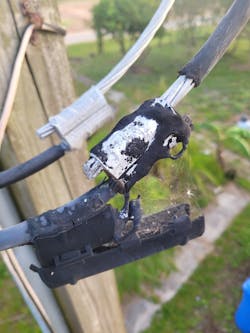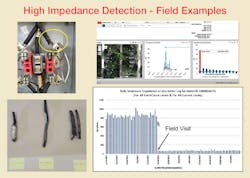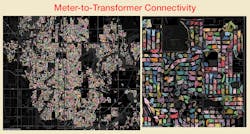Getting Smart at the Edge: AMI and Distributed Intelligence
Distributed intelligence (DI) represents a new smart or active grid that can solve value-based use cases at the grid edge. Through open, secure applications, utilities can use edge-computing capabilities to gather data and insights around grid use and performance.
By relying on this DI enterprise application platform, utilities can obtain detailed data and a full picture of the grid in real time, maximizing the value of their advanced metering infrastructure (AMI) investments and looking towards next-generation capabilities. Before diving into next-generation AMI capabilities and what utilities aim to do with this technology, it is key to look at all the factors that influence AMI.
The Evolving Utility Mandate
There is a growing and evolving mandate for utilities to drive environmental and societal benefits with the technology they deploy to the field. Utilities are looking to continue making investments based on both internal and external factors. There are four specific principles a utility can use when thinking about what the future looks like:
- Transforming the space. This focuses on beneficial electrification (the replacing of direct fossil fuel use with electricity to reduce emissions and energy costs) and how to facilitate and enable adoption.
- Investing in the future. A cleaner, more distributed, and more secure energy future requires companies address basic system needs.
- Uplifting communities. Organizations need to drive equitable access to clean energy opportunities, infrastructure, and benefits.
- Powering the policy. To reach a clean energy future, utilities need to support policies for 100% clean energy.
The external influences focus on the current environment when determining the impact on and from future AMI strategies, including:
- Vendor capabilities. What current AMI systems are influenced by, in terms of network and vendors.
- Utility benchmarking. Utilities across the United States are in various stages of AMI deployment. Some have not yet deployed AMI, some are in the process of deploying, some have installed a first-generation AMI, and some are jumping right into next-generation AMI. This impacts what technologies might be readily available from vendors.
- Energy Infrastructure Modernization Act. This 2011 legislation drove the original AMI adoption in Illinois and outlines the services a utility is expected to deliver through its investments.
- Climate and Equitable Jobs Act. This 2021 legislation sets targets for clean energy technologies, like electrical vehicles (EVs), beneficial electrification, and equitable clean energy in Illinois.
- Regulatory guidance. Regulatory entities investigate AMI deployments and hesitate to approve investment without sound business cases.
- Infrastructure Investment and Jobs Act. This 2021 legislation will drive investment in core infrastructure including power and grid-related programs, broadband, water infrastructure and low and zero-emission vehicles.
Next Generation Capability
With next-generation AMI, utilities can use edge computing, peer-to-peer communications, and data analytics to create new services for customers and ways to better run their businesses. However, over the years, the technology has rapidly evolved.
Field technology then advances to the next level with enhanced AMI. With the technology now installed, utilities and vendors continue to evolve and find new benefits to AMI installations. The rise of AI, edge computing, cloud services and more robust networking technologies — coupled with an “on demand” appetite for data and interactivity from consumers — has ushered in an era of digital transformation for utilities. The capabilities of enhanced AMI include automatic outage detection, home energy reports, partnerships with other utilities via joint use infrastructure, customer segmentation, and distributed energy resource (DER) management where possible.
Evaluating with Smart Meters
Meters have gone through a major evolution. Utilities used to read meters once a month, which then shifted from reading every hour with AMI, to reading every 5-15 minutes. Now, next-generation residential meters are capable of being read 4,000 times per second, and polyphase meters can be read 32,000 times per second. This advancement of meters leads to the generation of massive amounts of data collected every second. The amount of data can be overwhelming; what is the secret to dealing with it? Getting smart at the edge.
These meters can utilize peer-to-peer communication to make informed decisions at the edge about what specific data should be shared back with the utility companies. This communication between meters allows for the isolation of the electrical location of grid events, alongside details about the actual problem. Evaluations of AMI can be conducted in laboratory settings to validate the results with meter boards that simulate the field.
High Impedance Detection
With high impedance detection, DI smart meters can determine impedance issues occurring from the transformer to the meter. Whether the issue is the state of the wire, splices or transformer, the distance between service drops, and the number of service drops, all can affect impedance. DI-enabled smart meters can daily determine the cumulative impedance of the meter base, wiring to and from the home and the transformer winding resistance. Using that impedance, the utility can detect high-resistance splices or faulty meter sockets or even a tree contact on the wire before an outage occurs.
In addition, using utility metadata about the meter and transformer locations, the utility can identify locations in the grid where the wire gauge is too small and/or the distance to the transformer is too long to support electric vehicles or solar panels at the premise. This is a huge advancement in the field, and one that has been heavily anticipated.
The Meter-to-Transformer Relationship
Using data from smart meters and peer-to-peer communications, utilities can map which meters are on each transformer. This has been a huge challenge in the past, and this capability is a game changer in the field. Every meter communicates with its neighboring meters on the same side of the transformer, this allows utilities to clean up and correct GIS records. In addition, along with meter ID, the neighboring meters can share the current voltage and loads at each premise ultimately determining the “real time” load on the transformer. Using this knowledge, the utility can determine hour by hour if any specific transformer is approaching an overload condition and proactively upgrade the transformer KVA rating before an overload condition occurs.
Predictive monitoring has been a perpetual problem for utilities. With next-gen AMI DI smart meters, utilities can identify cases of power quality issues or voltage notching, which happens when things like a car hitting a pole occur, there is a breakdown in a transformer or underground cable, or there are large variable frequency motors. By utilizing the data gathered by the meters, utilities can predict what issues may arise or what impacts an incident will have on the grid without involving guesswork. Teams can see if the problem lies with the grid or elsewhere improving overall grid reliability.
Next-generation AMI with DI has a lot of features to meet customer needs and move the grid management forward. Things like peer-to-peer communication, detecting high impedance, and location awareness are changing the utilities field and making it easier for companies to help their customers along the way. Technology continues to evolve, and as such, next-generation AMI will continue to evolve with it.
Evolving Meters
We have learned that although smart meters are a relatively new technology, they continue to evolve to meet the changing needs of customers as well as the power grid. Central to that evolution is the demand for more data at a customer premise, which drives the need for grid-edge applications, or distributed intelligence.
These applications can perform functions such as detecting high impedance conditions — indicative of potential faults on the distribution system — as well as location awareness, which will help utilities better monitor their facilities. Through these applications, the utility industry will be better equipped to meet the ever-changing needs of our customers and drive toward a future that includes higher penetration of EVs and DERs.
Natalie Hammer is the senior manager AMI Strategy and Data Analytics for ComEd in Chicago. This includes overall responsibility for the strategic direction for Smart Meter Operations, developing advanced meter analytics and leveraging the AMI network to grow ComEd’s smart cities applications and offerings. Hammer has over 13 years of utility experience ranging from engineering roles in distribution capacity planning and at a nuclear generating station to various operations roles in ComEd’s transmission system control room. She has a Bachelor in Electrical Engineering and a Masters in Power Engineering, both from Illinois Institute of Technology.
Mel Gehrs is a technical sales engineer for Itron and for the past ten years, he has been working for Itron and is currently researching high-speed metrology and the appropriate math algorithms to build the next generation of DI agents. He brings a uniquely broad and deep skill set to the smart grid. Initially, Gehrs spent 30 years at ComEd/Exelon working in all areas of the utility as director of Strategic Planning. He has degrees in Nuclear and Electrical Engineering from Kansas State University.
About the Author
Mel Gehrs
Mel Gehrs With degrees in nuclear and electrical engineering from Kansas State University and a passion for building high-performance servers for data mining, Mel brings a uniquely broad and deep skill set to the smart grid. Initially, Mel spent 30 years at ComEd/Exelon working in all areas of the utility as Director of Strategic Planning. He then spent four years in his “dream job” at NASA that included projects like installing and testing super capacitors in an electric dragster. For the past 10+ years he has been working for SSN/Itron and is currently researching high speed metrology and the appropriate math algorithms to build the next generation of DI agents. Mel is a Technical Sales Engineer for Itron and for the past ten years, he has been working for Itron and is currently researching high-speed metrology and the appropriate math algorithms to build the next generation of DI agents. Mel brings a uniquely broad and deep skill set to the smart grid. Initially, Mel spent 30 years at ComEd/Exelon working in all areas of the utility as Director of Strategic Planning. Mel has degrees in Nuclear and Electrical Engineering from Kansas State University.
Natalie Hammer
Natalie Hammer is the Senior Manager AMI Strategy and Data Analytics for ComEd in Chicago. This includes overall responsibility for the strategic direction for Smart Meter Operations, developing advanced meter analytics and leveraging the AMI network to grow ComEd’s smart cities applications and offerings. Natalie has over 13 years of utility experience ranging from engineering roles in distribution capacity planning and at a nuclear generating station to various operations roles in ComEd’s transmission system control room. Natalie has a Bachelor in Electrical Engineering and a Masters in Power Engineering, both from Illinois Institute of Technology.



